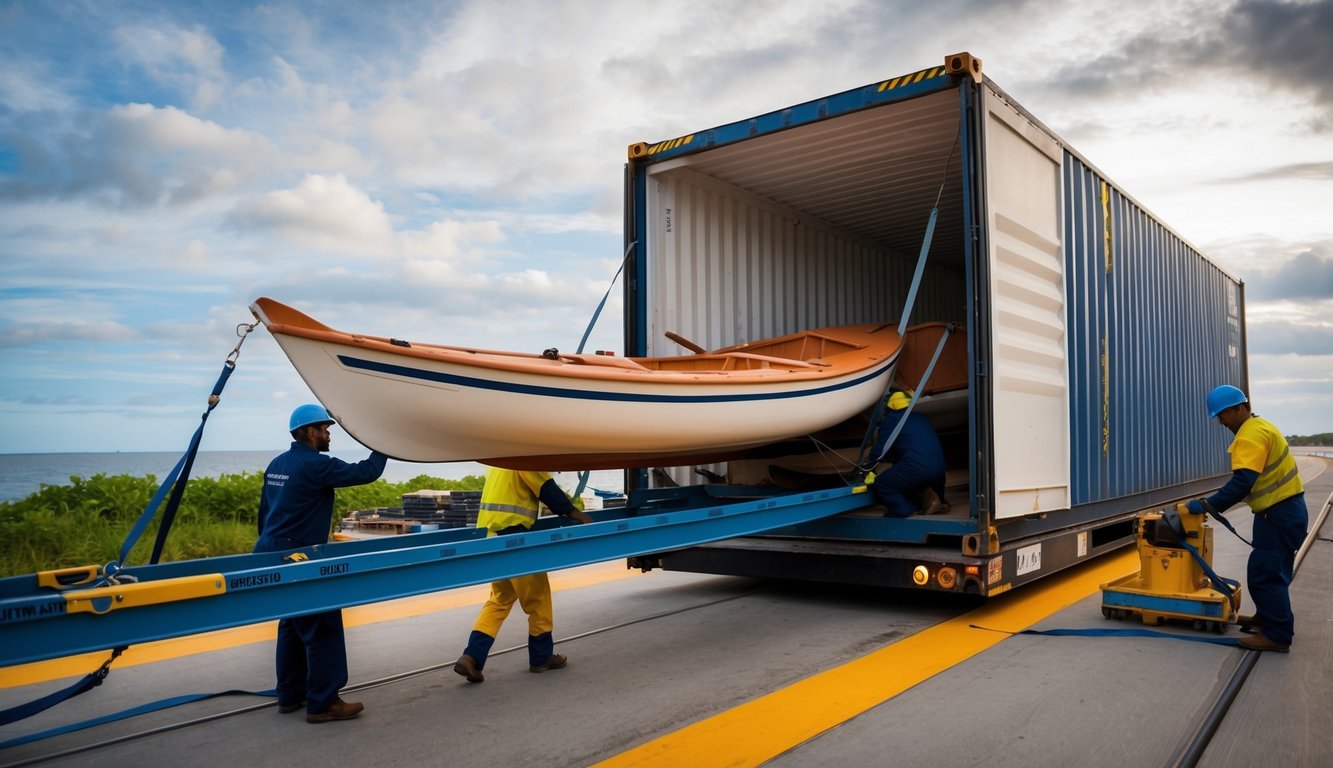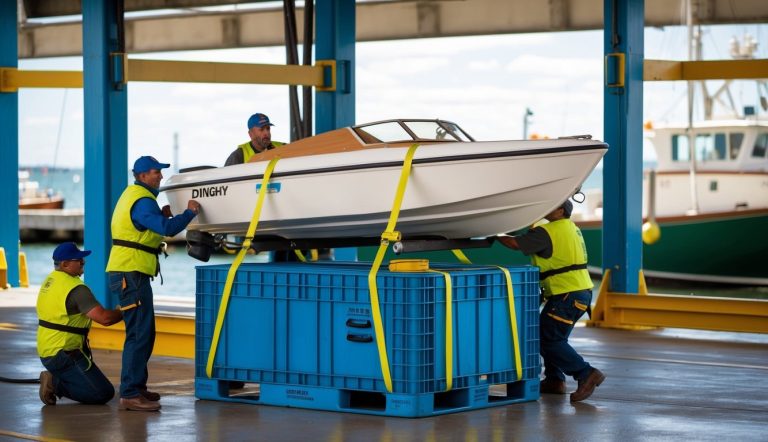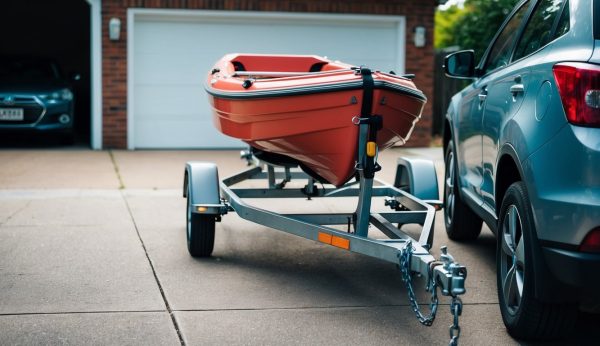Factors Influencing the Cost of Shipping a Dinghy

When planning to transport your dinghy, several key factors will determine how much you’ll pay. The size, weight, distance, transportation method, and time of year all play crucial roles in the final price calculation.
Size and Weight of the Dinghy
- The dimensions and weight of your dinghy are primary cost determinants when shipping. Larger and heavier dinghies require more specialized equipment and resources to transport safely.
- Most shipping companies measure dinghies in terms of length, width, and height. A standard 8-foot dinghy will cost significantly less than a 12-foot model. Boat size is a primary factor in determining shipping costs across all vessel types.
- Weight matters tremendously as well. Inflatable dinghies typically weigh less than rigid models, making them less expensive to ship. For example, a 50-pound inflatable dinghy costs about 30-40% less to ship than a 120-pound rigid dinghy of similar dimensions.
- Many transporters also calculate a “dimensional weight” that considers both the physical weight and the space your dinghy occupies during transport. This measurement ensures you’re charged appropriately for the resources needed.
Distance of Transport
- The shipping distance significantly impacts your total cost when transporting a dinghy. Most boat transport services charge on a per-mile basis, with rates typically decreasing as the distance increases.
- For short distances under 100 miles, you might pay $2-3 per mile. For medium distances (100-500 miles), rates often drop to $1.50-2.00 per mile. Long-distance transports exceeding 500 miles generally cost $1-1.50 per mile.
- Keep in mind that transport method and distance work together to determine your final price. Remote pickup or delivery locations may incur additional fees due to accessibility challenges.
- Interstate transportation involves more regulations and potentially higher costs than shipping within a single state. International shipping adds customs fees, import taxes, and special permits to your expenses.
Mode of Transport
The transportation method you choose significantly affects your dinghy shipping costs. You generally have three main options:
Overland Transport:
- Flatbed trailers: Most economical for standard-sized dinghies
- Specialized boat trailers: Better for delicate or custom dinghies
- Enclosed transport: Most expensive but offers weather protection
Water Transport:
- Container shipping: Good for international moves, typically charged by volume
- Roll-on/roll-off: More affordable for larger dinghies that can be wheeled
Air Freight:
- Fastest but most expensive option
- Typically 3-5 times costlier than land transport
- Usually only practical for urgent deliveries or remote locations
The mode of transportation impacts both cost and delivery timeframes. While overland transport is most common for dinghies, your specific situation may warrant considering alternatives.
Seasonal Demand
The time of year when you ship your dinghy can significantly impact pricing due to seasonal demand fluctuations. Understanding these patterns helps you plan more cost-effective transportation.
Peak Season (April-September):
- Prices typically increase 15-30%
- Longer wait times for available transporters
- Earlier booking becomes essential
Off-Season (October-March):
- Lower rates due to decreased demand
- More flexible scheduling options
- Potentially faster service
Weather conditions during certain seasons may also affect shipping costs. Winter transport in northern regions might include surcharges for navigating snow and ice. Hurricane season in coastal areas can disrupt schedules and increase insurance costs. Fuel price fluctuations throughout the year also impact shipping rates, with summer generally seeing higher fuel costs that carriers pass along to customers.
Choosing the Right Boat Shipping Company

Finding a reliable company to ship your dinghy involves checking their track record, ensuring proper insurance protection, and matching their services to your specific needs. The right choice will save you money and prevent headaches during transport.
Reputation and Experience
- When shipping your dinghy, partner with a company that has solid experience in boat transportation. Look for transporters that have been in the industry for several years, as this indicates they understand the complexities of boat shipping.
- Check online reviews and ratings from previous customers. The experiences of other boat owners can reveal a lot about a company’s reliability and professionalism.
- Ask for references from the shipping company. Reputable transporters will gladly provide contacts of satisfied customers.
- Verify if the company specializes in boat transport specifically. Companies that focus on boat shipping typically have specialized equipment and trained staff for handling dinghies properly.
- Industry certifications and memberships in professional organizations are additional indicators of credibility.
Insurance and Liability Coverage
- Never ship your dinghy with a company that doesn’t offer comprehensive insurance coverage. Make sure the shipping company has proper insurance to protect your vessel during transit.
- Request proof of insurance before signing any contracts. The policy should clearly cover potential damages that might occur during loading, transport, and unloading.
- Understand the claim process beforehand. Ask the transporter to explain how claims are handled and the typical timeframe for resolution.
- Check if the company has cargo insurance, liability insurance, and workers’ compensation. This complete coverage protects your interests if anything goes wrong.
- Be wary of extremely low-cost providers, as they might cut corners on insurance to offer lower rates.
Services Offered
- Compare the services offered by different transporters. Some companies provide door-to-door delivery, while others might only offer terminal-to-terminal service.
- Ask about handling procedures for your dinghy. Professional transporters will have protocols for securely fastening your boat and protecting sensitive components.
- Inquire about tracking options during transit. The best companies offer real-time tracking so you can monitor your dinghy’s journey.
- Check if the transport company offers preparation services. This might include shrink-wrapping, covering sensitive equipment, or disconnecting batteries.
- Request a detailed timeline for pickup and delivery. A reliable boat shipping company will provide clear scheduling information and keep you updated about any changes.




